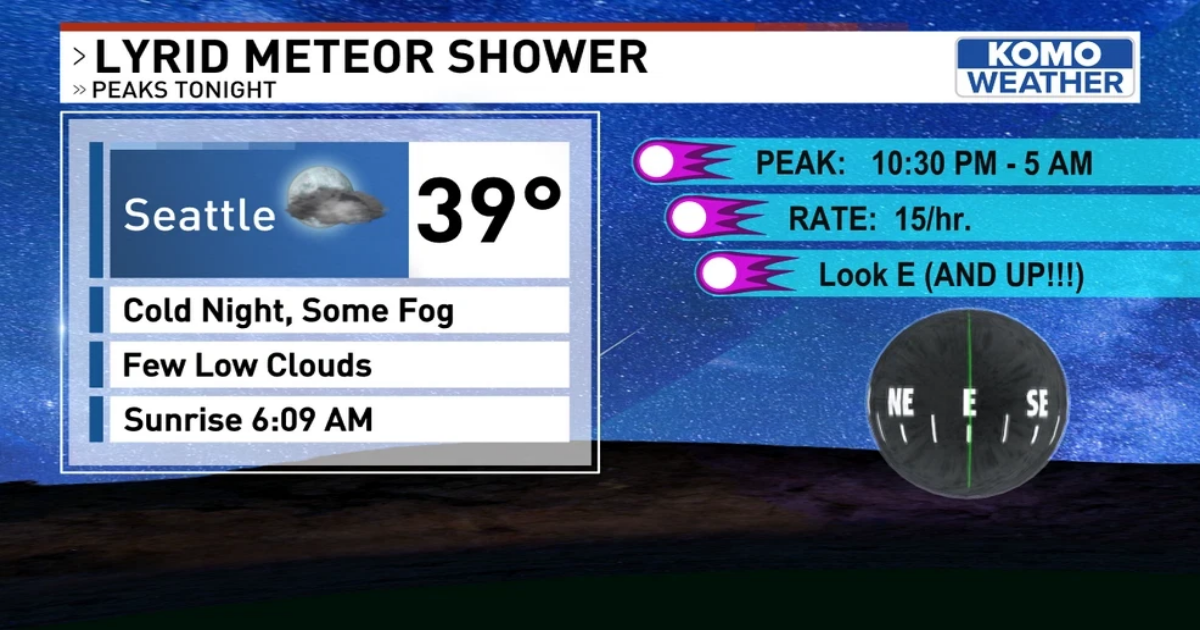Get ready for a cosmic display: Lyrid meteor shower peaks overnight Monday
SEATTLE — When you think of meteor showers, you may think of the impressive Perseids in August. But April has a falling star display of its own as well. The Lyrid meteor shower peaks Monday night.
According to NASA, this is one of the oldest known meteor showers, having been observed for 2,700 years. While often not as prolific or bright as some meteor showers that leave bright trails across the sky, you may still be able to see an occasional bright flash, or a fireball, in western Washington.
The meteors are pieces of space debris from comet C/1861 G1 Thatcher. Each year, Earth passes into its trail and leftover comet particles sweep into our atmosphere, disintegrating as they fall toward Earth.
For the best viewing, head out away from the city lights and dress warmly, it’ll be chilly Monday night!
Pockets of fog or low clouds may block visibility in a few neighborhoods, and the illumination of the waning crescent moon at 32% of full levels, rising at 4:02 a.m. may outshine some meteor flashes.
Still, go out, orient east, and look up, even from the city! Be patient, as you’ll likely have to wait to see some 5-15 meteors per hour.
Click here to see the full forecast for western Washington.
